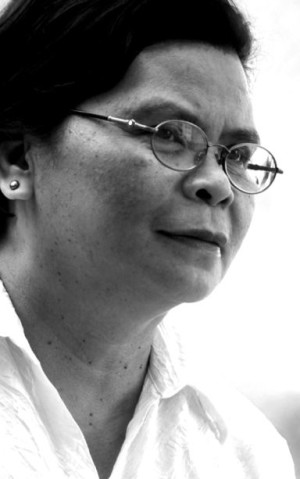
DELACERNA
Observance of Lent has enriched a lot of our cultural tradition and community life.
In my childhood, the end of the school year also meant participation in the Lenten activities which included preparation and partaking of the Lenten meals prepared. One of the most memorable food was the dinuldog which is similar to the binignit but it has more of the yellow squash and thicker coconut milk. Imagine eating it hot as the afternoon merienda before going to the church for the Lenten activities for it did not taste good when cold.
This became a joke, too, for those who got failing marks because of the kalabasa.
Monggos especially prepared with thick coconut milk mixed with the native buwad pinikas was the common viand for the whole Holy Week.
Families keeping the tradition of maintaining and decorating the carrosa of a particular saint were particularly busy preparing a huge monggos banquet to feed the men who repaired and cleaned the carrosa and pushed it around town during the procession.
My grandmother’s family had the practice of rotating the carrosa of Mary Magdalene, and I remember the whole ritual of the dressing up of the saint and the procession which started and ended at the plaza.
There was hardly any meat to feed the workers, visitors and the devotees joining the procession. I will never forget how my grandmother had a very special way and even more painstaking way of preparing the monggos.
They had a special brand of monggo, not the one on display at the store, but especially ordered for Lent. After boiling it, she pounded it with a pestle until it was almost powdered. Mixed with spices and thick coconut milk, it was fun eating our delicious monggo lunch that one could forget longing for meat.
Later on, I realized why men would shout “Monggos!” when lifting or moving a huge and heavy object. This was in reference to this practice.
The endless cooking of the Lenten food during the pabasa or the siete palabras could also turn comical. One occasion while the pabasa was going on, a loud voice was heard from the kitchen saying “Uy, nidukot na ang landing!” which the mananabtan or prayer leader immediately picked up the message and sang “Nidukot na ang landing, O Ginoo” which caused giggling in the whole house.
A Lenten practice which was hardly noticed by my generation was the “mangangahoy,” the gathering of wood during Black Saturday. The practice included the going up to the mountain or forest early in the morning to gather wood and come down at sunset.
This was to commemorate the passion of Jesus Christ by going up the mountain or forest, gather wood and bring the load of wood down the mountain.
This practice was told to me by a noted Filipino anthropologist who came to Cebu for a conference and wanted to know more about the “mangangahoy” in the mountains of Cebu. Unfortunately, we don’t see any of these mangangahoys but we have more of the mag-uuling.
As an adult living in the city, the Lenten activities did not center on the procession but the showing of religious or biblical films on television, stage plays, and the movie houses.
The air lanes were filled with classical music or musical scores from the best movies from Holy Wednesday to Black Saturday. The most popular was the musical score from the movie “The Ten Commandments.”
There was a time when all the movie houses in downtown Cebu City were showing religious or biblical films like “The Ten Commandments,” “The Robe,” “Ben Hur,” “The Greatest Story Ever Told.”
I enjoyed crossing Colon Street to watch “Jesus of Nazareth” then afterwards entered the movie house across which showed “The Message,” a film about the life of Prophet Muhammad. There was also a time when classical films were shown during Lent and one of them was the Japanese classic film “Kagemusha.”
I saw to it that I did not miss any of these films every Lenten season and I did not mind repeating and reviewing the film. It was also a blessing to have various film versions of the Passion of Christ like the one of Mel Gibson’s “The Passion of Christ” and I enjoyed very much Rice and Webber’s “Jesus Christ Superstar” whether the Broadway or film version.
Last month during the National Arts Month celebration, the Cebuano Studies Center of USC came up with several literary activities at Robinsons Galleria. One of the most interesting presentation was “Tulo ka Dula sa Pagtoo,” three short plays on faith written by Msgr. Teng Ancajas.
Each play ran only for thirty minutes and had three actors each.
It was so effective because the themes were very timely, the dialogue appealed to any generation. For Msgr. Ancajas, this was a form of new evangelization.
In fact, his group in Pardo will go from one community to another and present the plays during the Lenten season. Good luck Msgr. Teng!
Disclaimer: The comments uploaded on this site do not necessarily represent or reflect the views of management and owner of Cebudailynews. We reserve the right to exclude comments that we deem to be inconsistent with our editorial standards.
